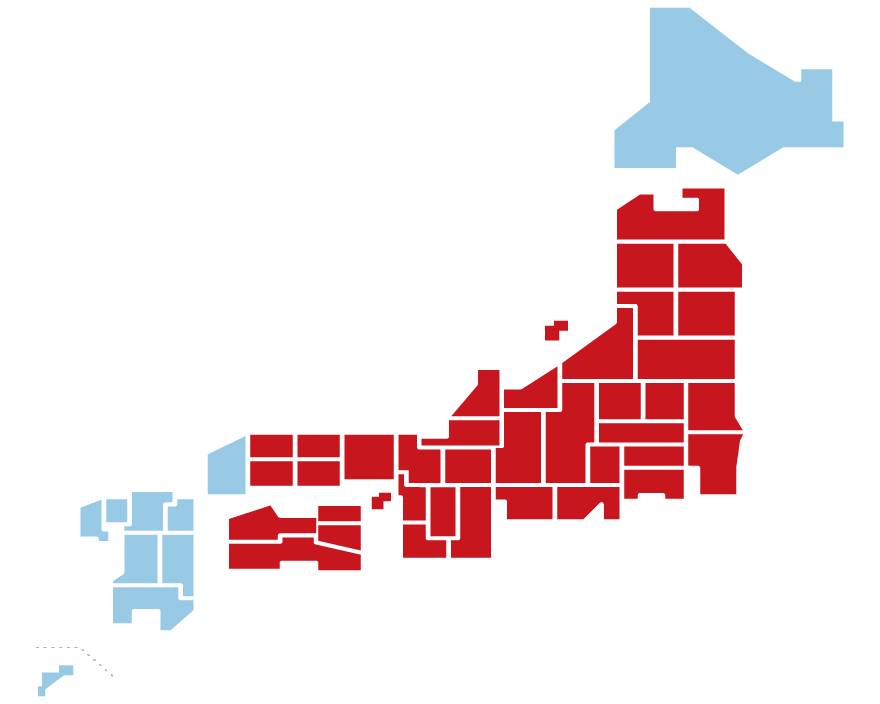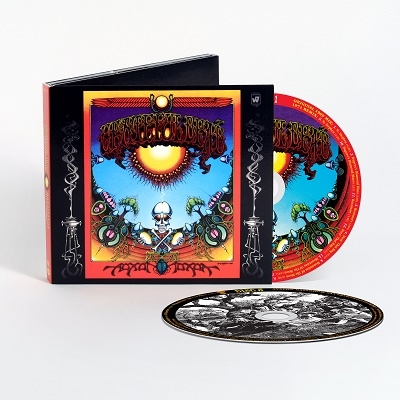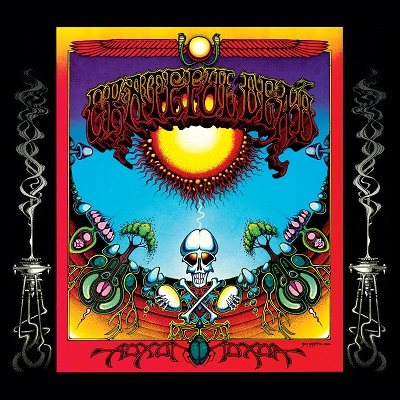|
フォーマット |
CD |
|---|---|
|
構成数 |
2 |
|
国内/輸入 |
輸入 (ヨーロッパ盤) |
|
パッケージ仕様 |
- |
|
発売日 |
2019年06月07日 |
|---|---|
|
規格品番 |
0349785612 |
|
レーベル |
|
|
SKU |
603497856121 |
ロック史における最重要年の一つ、1969年にリリースされた『AOXOMOXOA』。初のセルフ・プロデュースと、当時劇的に革新を遂げつつあった録音技術(16チャンネル)が彼らに芸術性、実験性の追及を可能にさせ、独自の音楽性を開花させたサード・アルバムである。今回リリースされる"50TH ANNIVERSARY DELUXE EDITION"は、これまでのシリーズ同様、最新リマスターされたオリジナル・アルバムと、未発表ライヴ音源を収録したCD2枚組となる。CD1には、オリジナルの1969年ヴァージョンのアルバム音源と、1971年のバンド・プロデュースによる決定版ミックスの、2つの異なるアルバム・ヴァージョンが収録される。
ボーナス・ディスクにあたるCD2には、1969年1月24日から26日にかけ、カリフォルニア州サン・フランシスコのアヴァロン・ボールルームで行われた未発表ライヴ音源を収録。本作に収録されるにあたり、Jeffery Normanがリマスターしたこちらの音源は、初めて16チャンネルで録音されたライヴ・コンサートの一つとしても知られている。『AOXOMOXOA』のリリース数ヶ月前に行われたこのライヴでは、「Dupree's Diamond Blues」や「Doin' That Rag」の初期ヴァージョンが披露されている。また1968年頃からライヴで演奏されながらも、結局スタジオ・ヴァージョンがどのアルバムにも収録されなかった楽曲「Clementine」の最後のライヴ・パフォーマンスも収められている。そしてライヴのハイライトとも呼べるのが、最高潮のピッグペンを捉えた「Alligato>Caution」でのジャムだろう。
グレイトフル・デッドのアーカイヴィストでもある、プロデューサーのDave Lemieuxは、本作についてこう解説する:「1969年のサード・アルバムを作るにあたって、グレイトフル・デッドは外部プロデューサーの起用を敢えて避け、『AOXOMOXOA』を自分たちの手で作り上げるが、それ以降もセルフ・プロデュース作品は1977年まで続くのだった。8トラックで録音された最初のセッションをボツにして、グレイトフル・デッドは、16トラックを手にし、自身のサイケデリック・サウンドを探求していったのであった。またこのとき初めて、収録曲全部の歌詞をロバート・ハンターが手がけている」
初期の代表曲であり、またライヴでの人気曲でもある「St Stephen」や「China Cat Sunflower」を収録している、『AOXOMOXOA』。回文となっているタイトルや、Rick Griffinによるアートワークも印象的な本作は、半世紀以上に亘るグレイトフル・デッドの歴史の一頁を知る貴重な初期の名盤なのだ。
構成数 | 2枚
合計収録時間 | 02:22:39
The Grateful Dead: Jerry Garcia, Bob Weir (vocals, guitar); Phil Lesh (vocals, bass); Tom Constanten (keyboards); Mickey Hart, Bill Kreutzmann (percussion); Ron "Pig Pen" McKernan. Additional personnel: John "Marma-Duke" Dawson, David Nelson, Peter Grant, Wendy, Debbie, Mouse. Recorded at Pacific Recorders, San Mateo, California in 1969. Includes liner notes by Gary Lambert. The Dead's first attempt at sixteen-track recording, AOXOMOXOA was remixed at Alembic Studios in San Francisco in 1971 by original engineers Bob Matthews and Betty Cantor. This is the mix used for the CD issue. All tracks have been digitally remastered using HDCD technology. Composer: Ron McKernan. Personnel: Jerry Garcia, Bob Weir (vocals, guitars); Phil Lesh (vocals); Tom Constanten (keyboards); Mickey Hart, Bill Kreutzmann (percussion). Recording information: Avalon Ballroom, San Fransisco, CA (01/24/1969-01/26/1969); Pacific High Recording Studio, San Fransisco, CA (01/24/1969-01/26/1969); Pacific Recording Studio, San Mateo, CA (01/24/1969-01/26/1969); Avalon Ballroom, San Fransisco, CA (09/1968-03/1969); Pacific High Recording Studio, San Fransisco, CA (09/1968-03/1969); Pacific Recording Studio, San Mateo, CA (09/1968-03/1969). Nearly synonymous with the term "psychedelic," the Grateful Dead reached their true peak of psychedelia on their third album, 1969's Aoxomoxoa. The band had already begun work on an initial recording of the album when they gained access to the new technology of 16-track recording, doubling the number of individual tracks they'd used on their last album. Fueled by acid and keeping pace with the quickly changing hippie subculture of the late '60s, the band went wild with this newfound sonic freedom. The exploratory jamming and rough-edged blues-rock of their live shows were ornamented with overdubbed choirs, electronic sound effects, and layers of processed vocal harmonies. Rudimentary experimental production took the band's already-trippy approach and amplified it with generously applied effects and jarring edits. In their most straightforward songs, Aoxomoxoa's ambitious production isn't as noticeable. Gelatinous rockers like "Cosmic Charlie" and "St. Stephen" showcase Jerry Garcia's spindly guitar leads and the band's dusty vocal harmonies clearly before detouring into wild studio experiments. Though the studio mix of "China Cat Sunflower" sounds like the different instruments are floating in space, trying to connect from distant individual planets, the core of the song still comes through, and this number would become a live favorite for the rest of the band's lengthy run. This was the first album where the band brought on lyricist Robert Hunter, who would go on to pen some of the band's best-loved lyrics. The early glimpses of the Hunter/Garcia partnership that come through on the bluegrass-inflected "Dupree's Diamond Blues" or the mellow ballad "Rosemary" foreshadowed the complete shift to gentle Americana the band would make on their next studio outing, 1970's masterful Workingman's Dead. The overly experimental production could sometimes obscure the musical ideas, as distorted vocals clashed with acoustic instruments or multiple drum tracks ping-ponged across the stereo field. The eight-minute epic "What's Become of the Baby" was the most glaring example of the album's ungrounded production aesthetic, reaching an almost musique concrete level of weirdness with random electronic sounds and choppy effects swarming on Garcia's isolated vocal tracks. Aoxomoxoa was so out there that the band themselves had second thoughts, returning in 1971 to remix the album in full. The new mix dialed back some of the wilder moments and added clarity, but these eight songs would remain the most adventurous, confusing, and over-the-top productions the band would record. Aoxomoxoa is a prime example of the Grateful Dead's difficult relationship with the recording studio, which would take different forms through to be continued...
エディション | Deluxe Edition、Remaster
-
1.[CD]DISC 1:
-
1.St. Stephen
-
2.Dupree's Diamond Blues
-
3.Rosemary
-
4.Doin' That Rag
-
5.Mountains of the Moon
-
6.China Cat Sunflower
-
7.What's Become of the Baby
-
8.Cosmic Charlie
-
9.St. Stephen
-
10.Dupree's Diamond Blues
-
11.Rosemary
-
12.Doin' That Rag
-
13.Mountains of the Moon
-
14.China Cat Sunflower
-
15.What's Become of the Baby
-
16.Cosmic Charlie
-
2.[CD]DISC 2:
-
1.New Potato Caboose
-
2.Dupree's Diamond Blues
-
3.Doin' That Rag
-
4.Alligator
-
5.Caution (Do Not Stop on Tracks)
-
6.Feedback
-
7.And We Bid You Goodnight
-
8.Clementine
-
9.Death Don't Have No Mercy
-
-
欲しい物リストに追加

コレクションに追加
サマリー/統計情報
 セブン-イレブン受け取り
セブン-イレブン受け取り
お早めのご注文で発売日前日にお届けいたします
山口県・四国・九州・沖縄県
フラゲ注文受付期間は地域によって異なります。
お住まいの地域をご確認ください。

発売日前日
にお届けします発売日当日
にお届けしますフラゲ注文受付期間は地域によって異なります。
お住まいの地域をご確認ください。


